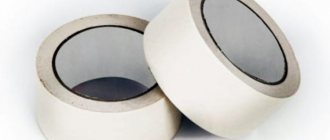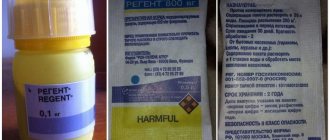Expert advice
If you notice a decrease in the temperature inside the room, it is worth inspecting the windows. In most cases, it is through the gaps between the glass and the frame and the sashes that cold air enters. Sealing or insulating windows for the winter begins with preparation. Before starting work, you need to thoroughly wash and dry the frames in the sun. When using adhesive tape, it is necessary to degrease the surface.
Mistakes to avoid
There are several mistakes that lead to negative results. Without following technology, even expensive materials will be useless in the fight against drafts. The most popular mistakes:
- Carrying out work at low or high temperatures. If the room is too cold and humid, the glue, soap or sealant will not dry. Carrying out work in the hot summer can result in the material hardening quickly, which means the adhesion between the layers will be unreliable.
- Ignoring preparation. Be sure to clean the frame from layers of old paint, clean it and degrease it. The surface must be smooth and level, without moisture or mold.
- The seam between the insulation on the outside. Gaps up to 4-5 mm between the insulation must be sealed with polyurethane foam.
- Attempts at self-assembly. Some types of work (replacing seals on plastic windows, sealing, installing a Swedish system) are difficult to do on your own.
No matter how good the heating is in the house, there will still be no heat in it if dry wooden frames with old sealing are installed. It is recommended to choose the best way to seal your windows before the onset of bad weather. Not only wood needs repair, because even plastic often lets in the cold.
Tips for choosing
To buy a quality tape, you need to focus on the following indicators:
- Material: foam rubber, PVC, rubber, PPE. Foam tape is the most affordable, flexible, and can close gaps of different sizes, but the porous structure quickly absorbs moisture, which leads to further deterioration of the raw material. PVC is stronger, resistant to moisture, and stretches. The rubber base can be self-adhesive or sealing tape. It contains rubber, which gives elasticity and resistance to temperatures. PPE is made from foamed polyethylene. Increased flexibility allows use for small window defects. Use at elevated temperatures is unacceptable, as a toxic compound will be released.
- Manufacturers. A lot of them. There are films from domestic representatives, and others from foreign ones. The most common ones can be identified: Profitrast, KIMTEC, Sanok. Domestic brands are not inferior in quality to foreign ones, as they are produced according to European standards and technologies.
- Price. The tape can be purchased by the meter or by the coil. Domestic materials are cheaper than foreign ones. So, Russian-made tape costs about 15 rubles per meter, and German quality tape costs 50 rubles.
Window insulation using Swedish technology
An effective type of window insulation using Swedish technology using Eurostrip sealant. It consists in the fact that the seal is not glued to the surface of the sash, but is inserted into a specially made groove. The configuration of the seal also matters. The herringbone holder facilitates reliable fixation of the seal in the groove and ensures its long service life.
Insulation using Swedish technology involves partial restoration of the window, and therefore is the most expensive method.
Approximate cost: 2.5-7 thousand rubles. for the repair of one window, depending on the condition, design (with double/separate sashes) and the size of the window unit.
Advantages: thermal insulation efficiency, 20 year warranty.
Disadvantages: labor intensive, high cost, difficult to do with your own hands.
Please note that plastic windows are not a panacea for drafts. Due to installation defects and wear of the rubber seal on the sash, owners of metal-plastic windows sooner or later think about how to seal their plastic windows so as not to blow.
We recommend a detailed description of how to insulate PVC windows.
Theoretically, all of the above methods are suitable for both wooden and plastic windows. But as reviews indicate, the most popular are insulation using Swedish technology and pasting with heat-saving film.
Winter will remind you to replace your windows, but this is not at all necessary to protect against the cold if you put in a little effort and prepare for the onset of cold weather.
Wooden frames look good even after the end of their service life, but the wood becomes deformed under the influence of weather conditions, gaps and cracks appear, and then most of the heat leaves the house through the windows. Therefore, you need to start insulation with them.
How to seal plastic windows
The problem of heat loss through windows is often solved by replacing old wooden windows with new double-glazed windows. But there are cases when, even after installing new metal-plastic windows, the question of maintaining heat in the room remains open. To resolve this issue, follow these instructions:
- Wash the windows. The first thing you need to do before sealing plastic windows is wash them. Cleanliness of windows ensures their light transmission, and light transmission ensures energy saving.
- Glue the new seal. Seals last from four to eight years, after which they crack due to loss of elasticity. Get rid of the old seal by removing the sash. Using assembly glue and special scissors, glue the new one, having first cleaned and degreased the groove. During gluing, the sealant must be evenly distributed over the window frame and sash. It cannot be compressed or stretched.
- Seal slopes and window sills. Many people forget that a window consists not only of glass, but also of window sills and slopes, from under which it can strongly “siphon.”
Slopes can be insulated using several materials:
- Styrofoam;
- Fiberglass;
- Mineral wool;
- Extruded polystyrene foam.
Choose the material based on the size of the cracks. They are glued using mounting adhesive, after which they are painted or puttyed. The most popular of these materials is polystyrene foam.
If there are large gaps in the window sills, they need to be dismantled and filled with foam. If there is little air blowing from under them, the cracks can be closed with silicone.
VIDEO INSTRUCTION
https://youtube.com/watch?v=dWjHPohn4pM
What to do if we have wooden windows
The wooden frame retains its integrity for 10 years, after which it dries out. This leads to the appearance of gaps between the frame and the window frame.
You can seal the cracks using paper, paste and cotton wool. But this is a very ancient method. Today in hardware stores you can find masking tape that can replace paste and paper, which greatly simplifies the insulation procedure.
You can also purchase one of the modern insulation materials. You can effectively seal old windows with foam rubber with an adhesive side or foam tapes, which are pushed tightly into the cracks and glued with paper.
VIDEO DESCRIPTION
To avoid the wind - useful tips
If you suspect that there is blowing from the window, bring a lighter or candle to the suspected place of blowing. If the flame flickers or goes out completely, then you were right.
“Siphoning” can come from a variety of places and, depending on the place of blowing, you need to resort to various measures:
- Sash. Replace the fitting clamp;
- Slopes. Disassemble them and glue the perimeter of the frame with foam;
- Window sills. Dismantle it and reinstall it, or apply silicone sealant along the bottom seam of the window sill;
- Loops. Check the sash for any unfilled holes and close them hermetically;
- Seal. Most likely, the seal has dried out and lost its elasticity - air gets in through the irregularities. Replace the seal;
- Window frame. Most likely, the window was installed incorrectly. Seal the outer gap with a special frost-resistant sealant.
Fabric strip
An excellent way to keep your apartment warm in winter is fabric strips. To do this, you do not need to specifically buy fabric in the store. Simply take old sheets and make small strips out of them. It won't take much time or effort.
Next, you need to wet the strips in water, and then squeeze them thoroughly, removing any remaining water. The last step: rub the wet cloth with soap and seal the cracks. Soap is a good insulator that does not allow air to pass through. The fabric is easy to remove, so when it comes time to open the windows, there will be no problems.
There is also a drawback: due to temperature changes, there is a possibility that the strips may come off. Then you will have to do the entire insulation procedure again.
Attention! It is better to take white fabric so that it is not noticeable on the windows
Sealant and putties
The first step will be to clean and degrease the window. Next, remove the glazing beads. The sealant is applied between the frame and the glass and window sill. You will need a special tool - a construction gun - to ensure even application.
The sealed area must be completely dry. At the end of the procedure, insert the glazing beads back. Putty works the same way, but it will take more time and effort. Buy it at any hardware store.
"Paste"
To make your own sticky substance, you will need flour and water. For 1 liter of water, take half a glass of flour, mix and put on fire. After the mixture has cooled, it can be stored for no more than 2 days.
Sun protection
Sunlight can sometimes not only please, but also create discomfort, especially in summer. To make their lives easier in the summer, many rush to seal their windows from the hot sun. You can resort to a procedure such as tinting, but there are cheaper ways.
For example, why not cover the windows with foil? Buy regular food foil. It can be glued both indoors and outdoors. The second option is more effective, since sunlight is reflected without almost penetrating into the apartment.
We insulate plastic windows
https://youtube.com/watch?v=NeogEgtosFs
Materials for sealing windows
Paper putty
The easiest and cheapest way to seal windows for the winter is with paper putty.
It’s not difficult to prepare - add crushed chalk or clay to a slurry of soaked torn newsprint and mix thoroughly until it reaches the consistency of thick sour cream. Using a spatula, seal the cracks in the wooden frames. Excess putty should be removed with a damp cloth without waiting for it to dry completely.
On top you can stick fabric strips cut from an old sheet. Instead of glue, it is better to use laundry soap, flour or starch paste.
This insulation is enough for one season, and the frames cannot be opened. In the spring it is easy to remove dried putty by first soaking it.
Construction putty
In old frames, it is better to seal the gaps between the glass and the bead with store-bought putty. First you need to remove the glazing bead, remove the old putty, wipe with a damp cloth and dry. The putty should be applied in a thin layer; After installing the bead and drying, you can paint it.
Silicone sealant
Sealant is an elastic and durable material that can withstand temperature fluctuations and moisture. To work you will need a special gun.
Before applying the product, the surface must be cleaned and degreased with acetone or alcohol. Excess sealant can be removed with a rubber spatula moistened with water or a plastic scraper. The seam can be smoothed with a finger dipped in soapy water.
Paper tape
The fastest way to seal windows is to use paper tape. However, this method is only suitable as a temporary measure. When there is a large difference in temperature between inside and outside the room or high humidity, the window tape quickly peels off.
Cotton wool, batting or foam rubber
The question of how to seal the windows so that it does not blow, and the windows can be opened, worries most often residents of the first floors. In this case, you can use cotton wool (including from an old blanket), narrow strips of batting or foam rubber. Wide cracks are filled with material using a screwdriver, narrow cracks are filled with a non-sharp knife. To secure it, a drop of sealant or assembly adhesive should be applied to the frame every 15-20 cm.
To improve the appearance, you can seal the seam with paper tape, but in this case you will not be able to ventilate the room. It should also be taken into account that cotton wool is hygroscopic, and moisture will not allow the adhesive tape to last long.
Self-adhesive foam
If the windows are not sealed before the cold weather sets in, it is more convenient to use self-adhesive foam rubber. This is an inexpensive material that is glued to the inside of the window sashes. It should be taken into account that foam strips prevent the frame from completely closing with small gaps.
Self-adhesive seal
The advantages of this material are a longer service life. A high-quality rubber seal will last two years. The seal is glued to the inside of the frame. This does not spoil the appearance and allows you to open the doors. The sealant is available for sale in different thicknesses, which are selected according to the width of the cracks.
Heat-saving film
You can use thermal film to seal windows. It is glued to the glass and the places where it joins the frame. Reflectivity allows you to save heat, but additional protection from drafts between the frame and the sash will be required.
Energy saving using Swedish technology
A more expensive but effective method is to use a Eurostrip seal. It is better to entrust such work to a specialist. The seal is fixed in specially made grooves and can last up to 20 years.
Wooden frames dry out over time. They form cracks through which cold air enters the house. It is possible to cope with this problem using improvised means. In this article we will tell you how to seal windows.
Tape for sealing windows for the winter
Adhesive tapes are divided into:
- Paper . Adhesive paper tapes are inexpensive and are placed on clean joints with sealed cracks. As a budget option, ordinary paper tapes are used, which are lubricated with wet soap or flour paste. The last option is so reliable that it may make you regret using it in the spring.
- Rubber (EPDM) , close small gaps well, do not allow air to pass through, withstand temperature changes from -50°C to +70°C, are easy to use - they are fixed well and are also easy to remove.
- Silicone . An advantage to temperature endurance is chemical inertness. Due to its plasticity, this tape will close large uneven cracks without losing the quality of sealing. It is more expensive than tapes made from other materials, but it justifies its cost.
- PVC . The porous structure gives the tape dustproof characteristics. The downside is low thermal insulation. It is painted under frequent temperature changes, but will serve well for one season.
Sixth method
Prepare:
- sugar;
- water;
- material.
For one glass of sugar, take half a glass of water, stir and put on low heat, stirring all the time. Boil light syrup. Dip the fabric into it and stick it on the window. And although the result is no worse than in previous options, this method is suitable if there is nothing suitable besides sugar. Fabric impregnated with a sweet composition can attract ants and other insects into the room. It is better to use one of the previous methods.
In addition to original methods and materials, there are also industrial products designed for insulation:
- transparent tape;
- adhesive plaster;
- sticky foam;
- mounting tape;
- fabric-based tape;
- foamed polyethylene on an adhesive strip.
The last list is best suited for plastic windows. And although it is generally accepted that they are much more effective than wooden ones and protect the room from the entry of cold, sometimes it happens that gaps form in the places where the hinges are attached or between the slopes, which also need to be sealed to prevent drafts.
You might be interested in
- How to insulate wooden and plastic windows for the winter
- How to clean pots using office glue
- How to sew a hole in a jacket
Sealing the windows for the winter: 6 ways
With the onset of the cold season, the question of saving heat in the room arises quite acutely, especially if the windows are wooden. For additional insulation, methods have been used that have been proven over years and decades, effective since the time when plastic windows were not yet invented; how to seal windows for the winter is decided on the spot. It depends on the material that is available.
First, the windows themselves need to be prepared. First you need to use a spatula to peel off all the old paint, which is peeling and coming off in flakes. Caulk all holes, cracks and openings in the frames. Lay padding polyester or cotton wool between the sashes and slopes; you can do this with tow; wet, crumpled newspapers are also suitable; as they dry, they straighten out and fill the cavities in the windows. Coat the junction of the frame and the glass with putty, plasticine, or glue each glass with narrow transparent tape on both sides. After this, you need to additionally seal everything with strips of cotton fabric or paper.
Preventing Heat Loss
Proper installation of window structures, periodic renewal of the sealing gum and the use of additional protective measures help reduce heat losses. If possible, energy-saving double-glazed windows with a thin layer of low-emissivity coating should be installed.
Windowsill
An incorrectly installed window sill leads to cracks.
When performing installation work, it is important to make sure that the window sill is securely fixed in a strictly horizontal position
Slopes
In most situations, blowing is observed on the slopes of window structures. If the position of the slopes is disturbed, they need to be adjusted to close the gaps that have arisen.
How to properly seal windows: basic mistakes
The use of some materials leads to damage to the window surface. These include:
- Masking tape. This material cannot withstand temperature changes. After only three weeks it falls off, and pieces of paint fall off along with it.
- Medical patch. The adhesive mass penetrates too deeply into the surface of the window, so it can only be torn off with a knife.
Use such materials only if you plan to install new windows in the spring or restore old ones.
By choosing the appropriate method, you will reliably protect your apartment from the penetration of icy air.
Everyone has their own method and device for insulating windows.
I don’t worry for a long time, I buy wide paper tape at the store and the problem is solved. Quick, convenient and most importantly, easy to remove in the spring. Of course, you can do it the old fashioned way, using newspapers and glue from flour. but this is a relic and has no use.
So it's simple, cheap and practical - paper tape.
In principle, you can buy special tape or insulation at a hardware store.
This year I insulated a window in kindergarten after an unsuccessful insulation by another mother.
The most important thing is to carefully plug all the cracks, as tightly and deeply as possible, so that there is no blowing from them. If the wind blows under the sealed one, then all this will fall off safely.
I plugged the cracks with some old cotton wool (I used what I found to insulate), and then sealed the cracks with pieces of cloth, soaked and well soaped. It holds on, does not fall off and does not blow.
In order to securely and warmly seal a window for the winter, long strips of foam rubber should be cut to the appropriate size. Then push them into the cracks between the windows. These foam strips will serve as an additional barrier to cold air blowing through the cracks. And only then seal the windows with masking tape.
The eternal recipe for pasting windows is paper on paste or thick material on a thick soap solution. holds up well and washes without problems, but in general it’s time to switch to modern PVC or wooden windows
It is good to insulate windows using ordinary wallpaper glue and white material. I spotted this method when I went to my daughter’s kindergarten to insulate the windows.
First, dilute the wallpaper glue, you only need a little of it (500 - 700 milliliters of ready-made glue). Then you plug the cracks with foam rubber, and then soak strips of white fabric (tear the fabric into strips of the required size) in wallpaper glue, squeeze them out and glue the windows. It adheres well to the windows, it is easy to remove and wash, and the paint does not suffer in any way. But fabric impregnated with wallpaper glue does not allow air to pass through. I will say that such insulation cannot be compared with adhesive tape, which has a habit of coming off, and if it doesn’t come off, then you will be tortured to wash the windows.
How to seal windows with flour. We are building a house
How to seal windows with flour
How to seal windows with flour
Window putty is a very important component when glazing wooden frames. If it is applied poorly or is missing altogether, then there is no point in talking about any good thermal insulation. In addition, glass that is not seated tightly in the frame will rattle every time the window is opened or closed.
How to make window putty
Recipe No. 1
To make it you will need oil sediment and finely ground white or decorative cement. If you use a dry construction mixture with large granules, then the future putty for windows will be of poor quality. Both ingredients must be mixed and thoroughly beaten to the consistency of thick sour cream.
Recipe No. 2
A very simple way. Chalk and flour should be mixed in a 1:1 ratio. Add water at room temperature to the resulting dry mixture and mix everything thoroughly. The result should be a creamy consistency.
Recipe No. 3
Window putty obtained using this method is durable. It is necessary to mix ground chalk and drying oil in a ratio of 8 to 3.
Recipe No. 4
This method allows you to obtain reusable putty. To make it, you need to mix rosin, melted lard and chalk in proportions of 2:1:10, respectively. This putty can be removed from the frame using hot water, after which it is suitable for reuse.
Recipe No. 5
To begin with, ordinary chalk must be crushed to a powder state. Then it should be mixed with linseed oil in a ratio of 4 to 1. The resulting mixture will have a yellowish color. If white window putty is required, purified linseed oil should be used.
Recipe No. 6
Another simple way to make putty. But, unfortunately, it is only suitable for the winter period, since in the summer it will become limp under the influence of moisture. It is good to use as a temporary solution. It is made from crushed chalk and sour cream. After mixing the ingredients, the putty should be thoroughly kneaded.
Recipe No. 7
This method allows you to obtain a particularly durable putty. When using it, it is easier to break the glass than to wait for it to fall out of the frame. To make it, you need tar, which must first be boiled for at least two hours over low heat. After which it should be mixed with sifted ash and kneaded until the putty stops sticking to your hands. Next, it should be used for its intended purpose until it hardens.
Removing old putty
To perform this operation you will need a narrow metal spatula. To make the job easier, old putty can be heated using a regular household hair dryer. Then it will soften and be easier to process. The blade of the spatula should be inserted into the gap between the putty and the glass, after which, with a gentle movement in your direction, remove part of the material. If in some areas it is not possible to perform this operation with a spatula, then you can use a chisel. After the glass is removed, the frame can be finally cleaned using sandpaper.
Old-fashioned methods of insulating window frames
Let's consider options for insulating windows using old proven methods:
- Insulation with newspapers. Windows can be covered with newspapers. If you do not plan to open the frames for ventilation in winter, then strips of wet newspaper are rolled into bundles and inserted into the cracks. In addition to newspapers, you can stuff cotton wool, tow and rags into the cracks.
You need to stick strips of white paper on top. The disadvantage of this method is that in the spring you will have to dig it all out of the windows. Over the winter it all sticks tightly to the windows, so in the spring it will be necessary to paint them again.
- Insulation with white fabric. You can insulate the windows with strips of white fabric, made from an old sheet. To do this, you need to prepare in advance not very wide strips of fabric, about 4-5 cm each. The prepared strips of fabric must be wetted with water and wrung out. Then the resulting wet cloths are generously rubbed with laundry soap (you can take any soap that you don’t mind) and glued to the cracks of the window frame.
The advantages of this method are the following: soap is an excellent insulator, practically impervious to air; white fabric is almost invisible on the white window frame; the fabric does not turn yellow, unlike paper; In spring, strips of fabric can be easily removed from the window frame.
- Insulation with foam rubber. An equally popular method has always been to seal cracks with foam rubber. Foam insulation consists of the following steps:
- take strips or pieces of foam rubber and hammer them into the cracks;
strips of white fabric from an old sheet 4-5 cm wide are prepared; if desired, you can purchase new fabric;
- Next, as in the previous method, the strips of fabric must be moistened with water, wrung out, rubbed generously with soap, and then the cracks must be sealed with them.
- Insulation with paraffin. For this method you need to prepare paraffin candles. Before use, paraffin candles are melted in advance in a water bath at a temperature of 65-70 degrees. Then, when the paraffin melts, it is inserted into the syringe. Next, the paraffin is evenly squeezed out of the syringe into the window slots, filling the free space. When paraffin hardens, it perfectly serves as a barrier from the cold.
- Insulation with adhesive tapes. Some homeowners cover their windows with medical tape, making a big mistake. The adhesive mass that is on the patch eats into the paint very strongly, which is fraught with not very pleasant consequences. In the spring, the plaster can only be removed with a wet rag and a knife, which also removes paint and pieces of plaster.
Instead of a medical tape, you can use regular paper tape. In spring it can be easily removed without tearing off pieces of paint. You should not use masking tape, as its adhesive mass dries quickly and after 2 - 3 weeks it begins to fall off.
You can use paper instead of strips of fabric, but it looks less aesthetically pleasing and turns yellow over time.
Insulation is also done using self-adhesive foam tape, which is inserted between the frames. To glue the foam rubber to the frame, just remove the protective film. In this case, you need to make a small release, then the gaps between the window frame and the frame will be better covered. True, the volume of foam rubber production is difficult to predict. If there is not enough of it, then it will not protect against the cold, but if there is too much of it, then the frame may not close.
LiveInternetLiveInternet
What should you do first to save heat in your house or apartment when cold winds blow outside and the temperature begins to steadily slide down? The answer is simple; first of all, it is necessary to resolve the issue of how to insulate windows for the winter.
In fact, insulating windows with your own hands does not require special skills.
One of the cheapest and easiest ways to insulate windows (one might say the “old-fashioned” method) is to seal the windows with strips of paper smeared with paste. It is advisable to first caulk industrial wool or foam rubber into the cracks of the windows. If there is nothing suitable at hand, then newspaper paper is torn into small pieces, soaked in water and the resulting mass is used to plug the cracks between the frames. For this work, use a sharp knife with a thin blade, a flat-edged screwdriver, or any other thin, sharp object, even a metal ruler.
Preparation of paste:
- 2-3 tablespoons of flour or starch;
- 0.5 cups of cold water;
- 1 cup boiling water
While stirring the flour (starch), gradually pour half a glass of cold water. After the formation of a homogeneous mass, pour in a glass of boiling water in a thin stream. Don't forget to constantly stir the mixture. Make sure that the thickening paste does not form lumps so that the mass remains homogeneous. If the mixture does not thicken well, it can be heated on the stove (stirring constantly) until bubbles form on the surface of the mixture. After this, cool the paste by placing the container with it in a bowl of cold water. The paste is stored in the refrigerator in a tightly sealed container. But do not forget that every day its adhesive qualities are deteriorating. From practice, the paste keeps well in the refrigerator for 4-5 days.
Warming process:
- “insulation materials” (medical cotton wool, drying cords or thin foam rubber) are inserted into the frame slots (it is important that they fill the cavities completely);
- take paper, measure out the required piece, spread it with paste;
- the product is pressed against the frame, air bubbles are removed, the strip is ironed very carefully with a rag.
In spring, moisten strips of paper with warm water. After 5-10 minutes, the dried paste will swell and the paper can be easily removed. All you have to do is wipe the frames with a damp cloth.
Instead of paste, you can use regular laundry soap. Moisten it in water and pass it over the paper several times, “rinse” it well. After that, glue it to the window. The disadvantage of this method is that if the cracks allow a lot of air to pass through, the paper will not hold up for long. By sealing the cracks, the strips of paper will not fall off until spring. In the spring, wet the paper and it can be easily removed from the windows.
Instead of paper strips, you can use strips of light fabric. The technology is similar to the previous method and is as follows:
- filling frame gaps with the selected material;
- wetting the fabric with a soap solution for subsequent sealing;
- gluing strips to insulated areas, removing air from under the fabric surface.
If you don’t want to bother with paste/soap solution, you can seal the windows with special sticky paper (paper tape), which is freely sold in retail. But keep in mind that if you have old painted windows, removing the specified tape in the spring may leave paint from the windows on it.
Another way to insulate wooden painted windows. Seal all cracks with regular gypsum putty . It is sold in hardware stores in the form of a white powder. Dilute the powder with water until the thickness of softened plasticine. It is best to cover cracks by hand, without any tools. Wipe the affected areas with a damp cloth to remove excess putty. On windows painted with white paint, the places where the putty was applied are practically invisible.
In the spring, such windows open easily, but most of the putty falls off. Residues are easily removed. Throughout the entire cold period, windows covered with putty do not allow cold air to pass through at all and retain heat well.
Another method that is worth mentioning is filling window cracks with paraffin. To do this, ordinary candle paraffin was heated in a water bath at a temperature of approximately 65-70 degrees and then this paraffin was poured into the cracks using a similarly heated syringe.
For high-quality and long-term insulation of wooden windows, use silicone sealant. In this case, it is advisable to purchase a lever syringe. A container of sealant is inserted into a lever syringe and by pressing the lever, the required portion of silicone is squeezed out. It is better to use a transparent sealant; if it accidentally gets on the windows, it will be little noticeable.
Warming process:
- To do this, first remove the frame from its hinges and lay it on a flat surface.
- Using a sharp knife or a flat screwdriver, remove the glazing beads from the entire perimeter of the frame: lift the wooden glazing beads that hold the glass (as if slightly “tearing it off”), then remove the bottom, side and finally the top beads.
- After removing the bead, the glass is removed from the frame. It is better to carry out this procedure with cloth gloves to avoid cuts.
- Clean the glass mounting areas from dirt and dust and apply silicone there with a lever syringe. It is better to take transparent silicone, it will not be so noticeable if it gets on glass.
- Place the glass in place and secure it with glazing beads. The frame is hung in place.
- It should be noted that beads often break during removal, so make sure you have spare beads. They are sold in construction supermarkets or in “wooden” markets.
Tip: In parallel with this method of insulation, you can immediately repair the frames (since the frames are removed :o). Remove old paint, fill cracks and knots, and seal cracks. At the same time, you can change the fittings by installing more modern and reliable locks and latches. All this will also affect the thermal insulation of the apartment.
An effective and inexpensive way to insulate windows is to use adhesive polyurethane seals with a tubular profile. This method is great if cold air enters the apartment through the gaps between the frames. True, this method is rather a repair and insulation of windows, as they say, “in one bottle,” since it will not be possible to do without additional work.
The insulation is attached to one side of the window frame - along the perimeter of the transom. When closing, the frame will bend the seal at an angle, and thus block the flow of cold air into the gap. Remember, the products adhere well to the base at a temperature of at least ten degrees. Therefore, do not put off thermal insulation for a long time. The sooner you do it, the better.
It is important to position the seal in such a way that the frame bends it and does not slide over it. Otherwise, such insulation will be of little use. Before gluing the seal, the surface of the frame must first be prepared - remove peeling paint, clean the frames from dust and dirt. If necessary, the surface of the frames can be sanded with fine sandpaper and degreased with acetone or solvent.
You can glue in one row or, if the width of the frame allows, in several, parallel to each other. If you chose a seal with an adhesive surface, it is better to nail it along the edges with small nails for greater fixation.
The undeniable advantage of tubular profiles is the ability to open or close the doors at any convenient time. Thanks to this, ventilation of rooms during the cold season ceases to be a problem.
Tubular-type profiles have a durability of five to six years.
And finally, let's consider another way to insulate windows - insulating windows with film. You can use regular plastic film. It is attached to the outside of the window, and if the windows are located at a height, then from the inside.
The entire window is covered with film, securing it along the outer edge of the frame. The film must be evenly stretched, otherwise the wind will tear it in places of weakness. Choose frost-resistant film, ask the seller about it in advance. Usually the frost-resistant film has a yellowish tint.
The film is secured with push pins through some kind of lining (you can use fabric tape, or cut pieces from a thicker film) to avoid tearing the film over time at the attachment points.
If you have an industrial stapler, it will make your task of attaching the film easier. It is also necessary to place a pad under the staples.
A relative innovation is the use of heat-saving films. They let light into the room, but do not “release” infrared radiation from it, thus retaining heat. Such a film has two sides, one with a metallic sheen and conducts current, the other does not. When gluing the film to glass, you must make sure that it “looks” at the street with the metal side - that’s the whole point.
It should be glued overlapping onto the frames and secured with tape. If you stick it carefully, its presence will not even be visible.
There are quite a few ways to insulate wooden windows. Choosing the best one for you based on cost, labor costs and reliability will not be difficult. Whatever method you choose, the main thing is that it retains as much heat as possible in your home.
Warmth and comfort to your home!
Scotch
The easiest way is to attach snowflakes to the surface of the glass with transparent or double-sided tape. You can replace these materials with construction paper adhesive tape. So that it does not cover the tips of the snowflakes and is invisible from the front side, a strip of tape is rolled into a ring with the adhesive surface facing out. In this form, it can replace double-sided tape: the ring is glued to the underside of the snowflake and glass. For any type of adhesive tape to adhere securely to glass, it must be dry.
But sticking with tape has its drawbacks, so it’s better to use other methods at home.
Why is it better not to use tape?
The main reason is its weak ability to adhere to a wet surface. In winter, cold windows fog up even from the breath of the person applying the decor. Adhesive tape is best used for attaching to glass cabinets or interior doors: here it will firmly stick to a smooth surface.
If you use transparent tape carelessly, fingerprints will remain on it. They become visible on the glass both day and night, spoiling the impression of the decor. But even well-pasted transparent tape shines brightly when artificial light falls at an angle.
By using double-sided tape with increased adhesive ability, the listed disadvantages can be avoided. But the material leaves particles of the adhesive layer on the surface of the glass. After removing the decor, it will be difficult to wipe off traces of tape.
Scotch tape for window insulation
Scotch tape is a name for painting tapes with a different base, on which an adhesive layer of natural or artificial rubber is applied. The base can be paper (crepe) or PVC. There are other varieties, but they are not suitable for covering windows.
Crepe paper differs from regular paper in that it has a corrugated surface. This gives it additional moisture-retaining properties.
Water and milk
For snowflakes cut from paper napkins, the best adhesive is plain water. It is more convenient to apply it to glass using a spray bottle with a mist spray. When using this technique, it is not the thin paper that should be moistened, but the glass. Carefully place a snowflake or silhouette figure made from a napkin onto a damp surface and straighten it with a sponge. After gluing, the water will dry on its own, leaving no marks on the glass.
This method is good because removing the decor is as easy as sticking it on. You need to pry the edge of the snowflake with a fingernail or a knife blade, and then remove it from the window. The surface of the glass can only be wiped with a dry cloth.
Milk can be used to glue thicker paper (writing or office paper). The quality of the product doesn't matter. Pour the milk into a flat saucer large enough for the largest snowflake. Place the products on the surface of the liquid, starting from the middle. They do not need to be soaked, just moisten the side that will be in contact with the glass.
Lift the paper figurine by the edges, allow excess liquid to drain and place it against the glass surface. Use a rag or sponge to press down on the paper, at the same time collecting any drips if they appear. Proceed to gluing another snowflake. If you work carefully, there will be no traces of milk left on the free glass.
To remove decor after the holiday, use the same technique as when using water. After milk, the window will have to be washed, but the product does not leave any difficult-to-remove marks.
Looking for the cause of cold windows
To ensure that the insulation work is not in vain, it is necessary to correctly determine the weak point of the window that allows cold air to pass through. The reason may lie in different parts of the structure:
- Slopes (deteriorated or missing insulation);
- Window sill (cracks or bridges of cold may form in its lower part, which, at first glance, are invisible);
- Glass (blowing occurs at the junction of the glass and the frame; the putty that covers the joint deteriorates over several seasons and requires regular updating);
- Frame and sashes (shrinkage of wood, subsidence of sashes, movement of soil under the house - all these circumstances lead to the formation of gaps between the frame and the window frame).
Defects in a wooden window frame lead to heat loss in winter.
If a visual inspection fails to identify the cause, you can use some tricks. For example, wet your hand with water and bring it to different parts of the window. An even more sensitive method is a lit candle or lighter. The flame reacts to any air vibrations, which will indicate places of heat loss.
A very old window requires an integrated approach. To achieve good thermal insulation, you need to eliminate all possible cold bridges. Structures in good condition need to be insulated around the perimeter of the frame and opening sashes using any available method.
Approaches to insulating old windows
Insulation of old wooden windows can be done from the outside and inside. If you live in an apartment above the second floor, most likely the latter option is more suitable for you. However, it is still possible to carry out some external insulation work.
In the case of wooden windows, there may be several problems:
- It may be blowing from under the window sill - in this case, the problem may be the seam of the frame and window, hidden under the ebb.
- The reason may be a poor connection between the sash and the frame (for example, due to misalignment).
- It is possible to blow through the junction of the frame and the wall.
- Often in wooden windows it blows from under the glazing bead - the junction of the glass and the frame.
Each of these problems has its own solution.
No. 9. Heat-saving film for wooden windows
This method is aimed at increasing the thermal insulation qualities of glass, but today heat-saving film is also glued to a wooden frame. It works like energy-saving double-glazed windows, i.e. allows daylight into the apartment, but does not release heat. This film is made on the basis of polyester, and it receives unique properties to reflect thermal radiation thanks to metal coating. This is a transparent material that does not violate the optical properties of window glass, withstands the effects of detergents, is highly durable and makes the window safe, because if the glass is damaged, all the pieces will remain on the film.
The process of installing the film is simple, but it requires care, because it is important to stick it evenly, without bubbles, with the metallized side facing out. It is best to work with gloves to avoid leaving greasy marks on the surface.
Thermal insulation film can make a window “warmer”, but cannot be used as an independent insulation material.
Self-adhesive foam for windows
A more technologically advanced way to seal windows and combat drafts. This method is good because it allows you to do without sealing the cracks with paper or fabric strips. Due to the presence of adhesive (adhesive) tape on the foam rubber insulation, it can be glued to the inside of the window sashes.
Approximate cost: 60-75 rubles/roll.
Pros: the window can be used as usual.
Disadvantages: after gluing, the insulation can prevent the window from closing; foam rubber insulation is non-hygroscopic and is not protected in any way. If the sashes fit tightly to the frame, you need to either saw down (cut, adjust) part of the wood, or choose other methods of insulation. If the gaps are large, you will have to decide what can be used to seal wooden windows besides this material.
Foam rubber for windows with an adhesive layer (foam rubber seal)
Types of insulating tapes and tape
Insulation sheets and tape have a number of advantages over other methods of window covering:
- The base will last for several years without replacement.
- Pasting is carried out independently, quickly.
- No additional materials are required.
- The adhesive base leaves no traces when peeled off and does not interact with the material to which it is glued.
But it is worth considering the disadvantages of this method:
- Covered openings cannot be opened.
- If the strip is poorly glued or of poor quality, then removal will be difficult and there will be tears.
There are two types of insulation sold in stores and markets:
- Pasting. This type has a lot of grip. Polyvinyl chloride, rubber raw materials, and foam rubber are used for its production. It has good flexibility and simply compresses to the required size. Stripes are available in black, white and brown colors. It is written on the packaging what size gap the fabric is suitable for.
- Sealing. This type is characterized by a void inside the tube, which helps retain heat. One side is equipped with an adhesive layer. The 7 mm gap is tightly blocked and can withstand all temperature changes. The color of the strip is chosen to match the color of the glass unit.
The durability of the glued tape must be checked annually. If replacement is required, then do it for the entire strip or a separate fragment.
No. 6. Insulation of wooden windows using Swedish technology
This is the most progressive, modern and effective way. Windows insulated using Swedish technology are actually equivalent in terms of tightness to modern plastic windows. This method also involves the use of a seal, only for it special grooves are prepared in the window sashes.
Swedish insulation technology involves the following procedure:
- dismantling the sashes;
- cutting thin grooves around the perimeter of the valves, which is carried out with a special cutter; the size of the groove must correspond to the size of the selected seal;
- installation in the grooves of the seal (polyurethane, PVC, polyethylene foam, less often foam rubber is used). No glue is used in this case - the seal holds well due to the thickenings existing in its design;
- applying silicone sealant to the junction of the sash and glass;
- if necessary, fittings and glass are replaced;
- installation of the sashes in place.
The durability of such insulation is 15-20 years, so the labor intensity and high price of the method are completely justified. It’s worth doing such work yourself only if you have at least a little experience in carpentry, otherwise you can only make things worse. The easiest way, of course, is to entrust all the work to specialists.
Windows insulated using Swedish technology can be opened at any time of the year, their appearance does not deteriorate, and sound insulation can be considered an additional bonus.
Window paper
More precisely, paper putty. This is the cheapest method, since all you need to seal the windows is a selection of old newspapers and water. To increase the effectiveness of the putty, you can add 2 parts of crushed chalk or 1 part of clay to it. The resulting mass is highly plastic, which makes it easy to seal even the smallest cracks. The window can be easily washed off the putty during operation (as long as it remains wet). Insulating windows with paper is an effective way, but only for one season; in addition, a covered window does not make it possible to open the sashes in winter. As the weather gets warmer, the putty is removed from the cracks and the window is washed.
Cost: 0 rub.
Pros: free and simple.
Disadvantages: the need to repeat the work annually, there is no way to open a sealed window, it is not aesthetically pleasing and the presence of additional decor in the form of gluing paper or fabric strips.
How to cover windows with paper. How to glue windows with soap for the winter
We glue windows with soap
Man has always thought about improving living conditions and the comfort of his home. This has always been the case at all times. Strong winds and harsh winters leave little choice, forcing residents to seal their windows and insulate their homes. Of course, at the current stage of development of the construction industry there are many modern technologies for sealing windows and further retaining heat. Also, no one has canceled expensive plastic windows, which can forever solve the issue of saving heat in your apartment.
But not every family can afford to buy modern windows, and they are simply accustomed to gluing windows with soap for the winter the old fashioned way. Or in some other old and proven way, it doesn’t matter. There are a large number of old and quite effective methods for sealing windows that remain relevant to this day. We will discuss the most famous and widely used, affordable method of sealing windows using strips of paper or fabric and simple laundry soap.
Eliminating shortcomings
The primary task before starting window covering is the following.
There are more convenient pasting methods
It is necessary to carefully examine all potentially dangerous places from where cold air can pass into the room. Determine how you want to insulate your windows. Then you need to purchase materials and available tools, if necessary. One of the simplest and most affordable methods of insulation is to cover windows with soap for the winter. This is the most popular and beloved method that our grandmothers and mothers used in those years when there was no talk of other innovations. The work, in principle, did not require much physical effort and consisted of several stages:
- Carefully seal all detected cracks with rags or cotton wool using a knife;
- cut strips of paper;
- soak the pieces of paper in soapy water and carefully stick them on the window frames.
The main advantage of this method is that the white paper or fabric is not noticeable and does not interfere with the aesthetic appearance of the window.
The soap itself simultaneously serves as an adhesive and sealant, and also does not allow cold or wind to pass through. Also, already cut paper or fabric strips can be used several times without losing the quality of window insulation. The disadvantage of this budget method is that if there is a sharp change in temperature, the paper may peel off. When the warm season approaches, strips of paper or fabric can be easily and without much physical effort peeled off by simply moistening them with warm water. Typically, this very affordable and effective method is used to cover old wooden windows. In addition, instead of cotton wool, you can use other materials that are available on the farm. https://www.youtube.com/watch?v=diWmEA1RPlI
Last few tips
Before the cold weather, every person begins to think about such an important
question: how to save heat and insulate windows? This issue is all the more relevant and acute given the increasing prices for energy resources. It is known that poorly laminated windows do not retain even half the heat. Now there are modern insulating materials that allow you to effectively cover windows and contribute to impressive heat retention. But with such a variety of means, the choice always remains only with the person, which method of insulating windows, modern or old-fashioned, to choose.
Causes
Poor quality installation
Violation of installation rules often leads to thermal insulation problems. As a rule, blowing occurs as a result of self-installation of window structures.
House shrinkage
When the house shrinks, individual elements adjacent to the windows shift. The result of shrinkage is the formation of gaps and large cracks.
Saving
By saving on window construction, you have to sacrifice quality. Often, cheap windows create problems in terms of heat retention.
Seal wear
With prolonged use, the rubber seals on the windows wear out, resulting in air entering the room. The solution to the problem is to replace the seal.
Ignoring operating rules
Neglecting standard rules for using windows leads to defects. In addition, the service life of the structure is reduced.











